 On May 23rd Patricia Walsh will be our Keynote Speaker at the 2012 Redefining Vision Luncheon. Patricia is the current principle for Blind Ambition Speaking where she offers motivational speaking, consulting, and training. Patricia is the National champion for the Olympic distance and recently secured Bronze for the United States in the Short Course World Championship in Beijing, China 2011. She has raced in over 12 marathons and ultra-marathons. Last year, she set the world record for blind athletes. Today, Patricia aspires to represent her country in the 2012 & 2016 Olympics in both track & field and triathlon. Before she became a world class athlete, Patricia was a college student working her way towards a career. In an interview with Allison Dunne for Northeast Public Radio (listen to the entire interview HERE), Patricia talks about her beginnings in college and at Microsoft and her efforts to find acceptance in her chosen field.
On May 23rd Patricia Walsh will be our Keynote Speaker at the 2012 Redefining Vision Luncheon. Patricia is the current principle for Blind Ambition Speaking where she offers motivational speaking, consulting, and training. Patricia is the National champion for the Olympic distance and recently secured Bronze for the United States in the Short Course World Championship in Beijing, China 2011. She has raced in over 12 marathons and ultra-marathons. Last year, she set the world record for blind athletes. Today, Patricia aspires to represent her country in the 2012 & 2016 Olympics in both track & field and triathlon. Before she became a world class athlete, Patricia was a college student working her way towards a career. In an interview with Allison Dunne for Northeast Public Radio (listen to the entire interview HERE), Patricia talks about her beginnings in college and at Microsoft and her efforts to find acceptance in her chosen field.
Patricia began her collegiate career seeking a degree in history and elementary education, but took a year off for financial reasons. During the summer of 2001, she attended a conference with Dr. John Gardner, who she had been working with to improve her computer skills:
“Actually, in working with Dr. Gardner in that year, I had been at a conference, and a woman came up to me and started talking to me about being in engineering. And, I wish I knew her name; I would thank her today. It never occurred to me that any person in the world would have the confidence in me to be an engineer. Like I really thought, I mean, that was the turning point; that’s when I thought it was off limits, and I thought that that was something that I just had to accept as a limitation. And I was just really trying to come to terms with that. And having one person in the world who was a random interaction who thought I was in engineering and saw that potential in me was all the motivation I needed to pursue it.”
So, Patricia went back to school focusing her studies in a new direction.
“I took this on firmly believing it would be an exercise in failure. I took this on thinking that even if I only last a term, I’ll be so much happier lifelong if I try. And my first term did not go well, (laughs) but I came back and did a second term and did not fail my second term, which, I’m always so thankful that I didn’t give up at the time when it really looked like I probably should have given up. . . I think it was a moment in time where I realized how badly I wanted to be an engineer, and how badly I wanted to know that I could be an engineer.”
Patricia says she “was getting a lot of resistance from my some of my professors and some teachers and lots of my family and people I was close to,” but like she mentions above, she felt she needed to try.
It was her mentor, Dr. Gardner, who pointed her toward AcessSTEM, a program directed by the DO-IT Center, or Disabilities, Opportunities, Internetworking, and Technology at the University of Washington in Seattle. STEM stands for Science, Technology, Engineering, and Mathematics. AccessSTEM is an online community where applicants learn about STEM fields, and get staff assistance with things like finding a summer internship or getting involved in a research project.
“It was a fantastic learning opportunity for me both in leading a research opportunity, but also in gaining some confidence, and, hopefully, producing some information or setting an example that others can follow to also pursue science and engineering.”
In March of 2005 Patricia received her Bachelor’s Degree in Electrical Engineering and Computer Science from Oregon State University. She then became one of the first blind engineers working for Microsoft. It was an opportunity worth overcoming a few challenges for.
“I had an experience awhile ago where there were some conversations going on that I wasn’t involved in where they were determining if I could own a feature or not based on my disability. By the time I was informed that those conversations were happening and that I wasn’t being involved, I was pretty upset about that because that’s very limiting to me. And you’ve got people who are making decisions for you who likely, again, well intentioned, but maybe don’t necessarily understand the tools you use, or don’t understand the access you do have. And that’s just a precedent you don’t ever want to allow set. You do not ever want the work to be given to you based on your disability.”
Patricia also has some advice for those who are unsure about reaching their career goals:
“Just keep your eyes and ears open for those opportunities that are there, and just don’t be afraid to pursue things, and don’t be afraid to put your foot in the door, and don’t be afraid to get knocked down and get back up, because that’s part of the life experience, and that’s, I would say, that’s just so key – to take those discouragements and accept that they’re going to happen, and accept that they’re going to be daunting every single time, but it’s still worth it to come back. I revel in how much further I am now than I ever thought was possible.”
Check back for Part 2 of this post: Patricia Walsh, The Athlete. You can see more about Patricia Walsh at http://blindambitionspeaking.com.
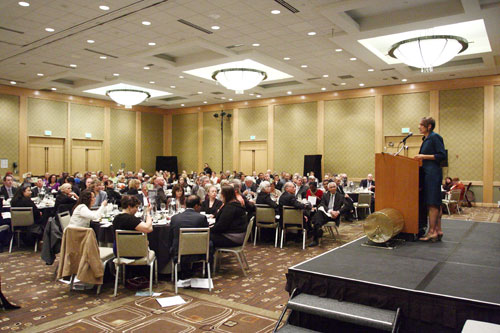

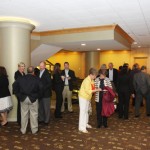
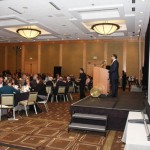
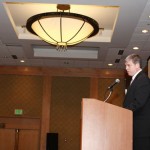
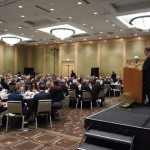
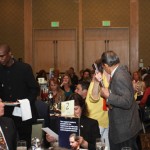
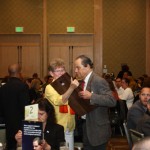
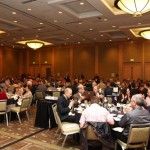
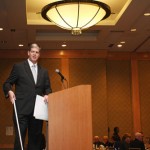
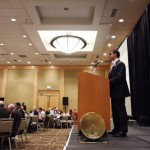
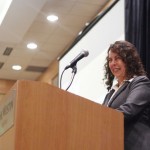
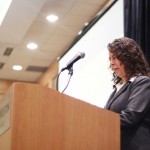
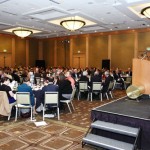
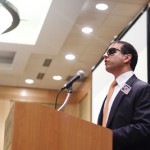
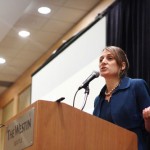
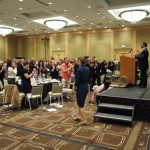
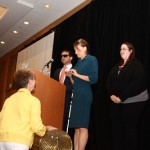
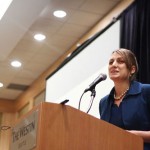
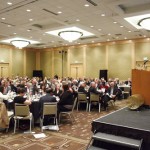
 On May 23rd Patricia Walsh will be our Keynote Speaker at the
On May 23rd Patricia Walsh will be our Keynote Speaker at the